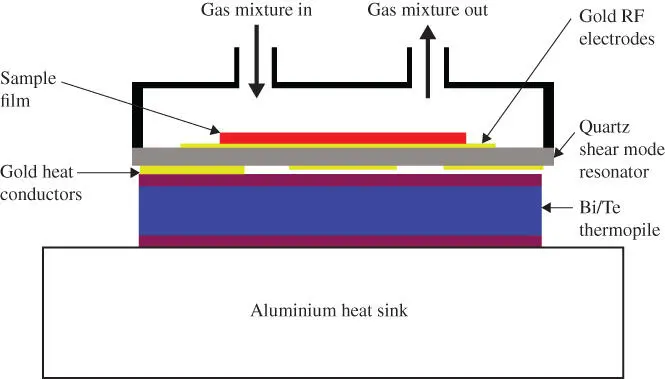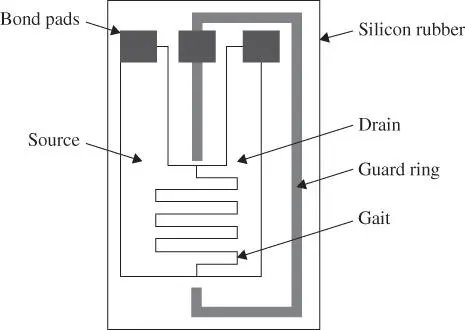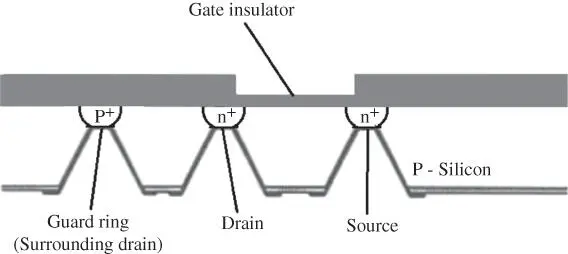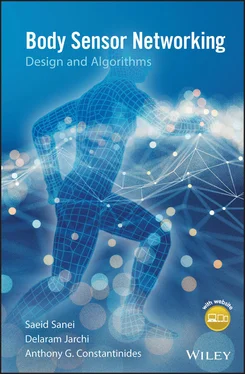Body plethysmography is another common lung function test. It measures how much air is actually in the lungs when one inhales deeply. It also checks how much air remains in the lungs after they breathe out as much as they can. A plethysmograph has the same applications as a spirometer.
The need for biological sensors was perhaps initially raised by the Department of Defense in the United States. In 2004 they announced an urgent need for the development of sensors for early-warning systems and the protection of military forces against potential chemical and biological attacks [43]. Traditionally, these sensors are particular types of chemical sensors and benefit from the high selectivity and sensitivity of biologically active materials.
Such sensors produce an electrical signal proportional to the concentration of a specific chemical or set of chemicals in the human body. Therefore, they should be biocompatible with and have no toxic effect on humans. However, current biosensors are more than a chemical sensor and are often used in biomedical applications.
The biosensors generally consist of a transducer, biological-recognition membrane in intimate contact with the transducer, and biologically active material, which is sensitive to the analyte molecule through a shape-specific recognition. Biosensors are generally divided into two categories: affinity-based and metabolic.
3.4.1 The Structures of Biological Sensors – The Principles
A biosensor consists of a biological sensing element and a transducer. The sensing elements can be organisms, tissues, cells, organelles, membranes, enzymes, receptors, antibodies, or nucleic acids. On the other hand, transducer types can be electrochemical, optical, calorimetric (thermal), or acoustic.
Bio-affinity transducers rely on very strong binding through which the transducer detects the bound receptor-analyte pair. The most common bio-affinity recognition processes are receptor-ligand binding and antibody-antigen binding.
Metabolic biosensors , on the other hand, sense the instances where the analytes are bound or the co-reactants are chemically altered, which in turn product molecules are formed, and the transducer detects the changes in concentration of the product molecules or co-reactants and consequently heat is released by the reaction. The common biometabolic processes are enzyme-substrate reactions and metabolism of specific molecules by organelles, tissues, and cells.
Biological recognition elements are immobilised on the surface of a transducer or in a membrane. This requires a bioreactor on top of a traditional transducer. The response of a biosensor is determined by four different factors: diffusion of the analyte, reaction products, co-reactants or interfering chemical species, and kinetics of the recognition process.
Various kinds of biosensors are mainly based on:
chemically sensitive semiconductor devices;
thermistors;
chemically mediated electrodes;
surface acoustic waves devices;
piezoelectric microbalances;
and many other individual or hybrid systems such as MEMS. As an example, for a quartz crystal microbalance sensor depicted in Figure 3.10[44]:
an electrical AC voltage causes the resonator (i.e. the piezo layer) to oscillate;
a target molecule binds with a receptor based on the lock-and-key principle;
resonance frequency changes because of the weight change;
frequency change is translated into an electrical signal and processed further.
Some examples of the transducers used in the design of biosensors are micro-electrodes, combined ion-selective field-effect transistors and micro-electrodes, fibre optodes and luminescence, thermistors and thermocouples, and surface acoustic wave (SAW) delay lines (often used as piezoelectric elements in sensors and modelled using transversal filters) and bulk acoustic wave microbalances.

Figure 3.10 A quartz crystal microbalance sensor; a thin film sample is coated on the top gold electrode of the quartz shear mode resonator (QCM). The QCM is then inserted between the thermopile and the sample chamber. The experiment consists of varying the composition of the gas mixture at constant temperature and observing changes in the resonant frequency and motional resistance of the QCM and the thermal power flowing between the QCM and the aluminium heat sink via the thermopile.

Figure 3.11 (a) An EnzymFET and (b) its electrical output versus urea concentration [50].
Source: Courtesy of Middelhoek, S., and Audet, S.A.: Silicon Sensors, Academic Press Limited.
As an example, a schematic of a semiconductor sensor is illustrated in Figure 3.11. The back side is connected to a urea sensitive ISFET, often called an ENFET (EnzymFET), similar to that shown in Figure 3.11a. In Figure 3.11b the electrical voltage with respect to urea concentration is shown.
These sensors are carefully packaged using biocompatible materials. One of these types is shown in Figure 3.12. The backside is also shown in Figure 3.13.
Since 1962, when the early glucose oxidase electrode-based biosensor was manufactured by Clark and Lyons [45], many other sensors with various technologies and applications have been developed. Vigneshvar et al. [46] present a comprehensive study of biological sensors. Table 3.1shows a large set of biosensors with their applications including the involved technology. Table 3.2lists the uses of different biosensors for the diagnosis of various diseases [46].

Figure 3.12 A semiconductor biosensor schematic [51].
Source: Courtesy of John Wiley & Sons.

Figure 3.13 A semiconductor biosensor schematic; backside contacts [51].
Source: Courtesy of John Wiley & Sons.
3.4.2 Emerging Biosensor Technologies
There have been many emerging technologies recently, including those built in mobile handsets for measuring human biological metrics. As an example, a health app which can monitor people's glucose levels without breaking the skin has been developed recently. The so-called Epic app can help people find out if they develop diabetes and need to make lifestyle changes to avoid it. The app can also tell people about their respiration and blood oxygen saturation. SMBG (self-monitored blood glucose) is recommended for all people with diabetes [47, 48]. To alleviate the intrusiveness of the sensors, there is a great appetite among researchers to design contactless sensors. Some of these sensors are introduced in other chapters of this book.
Sensor technology devices have become more miniaturised, wearable, user-friendly, cost effective, less intrusive, and inclusive, and are often accessible to outpatients and individuals. Human vital signs as well as abnormalities can be captured invasively or noninvasively (and in some cases nonintrusively) by various sensor modalities, some packed together in one package. The new wireless technology in parallel with the advances in high-speed computing systems provides more accurate and accessible health-monitoring systems. Physical, physiological, biological, and other sensor types are fast developing and allow full body screening in all times. Emerging sensor technologies provide constant feedback to individuals and create a safer and healthier world.
Читать дальше
















